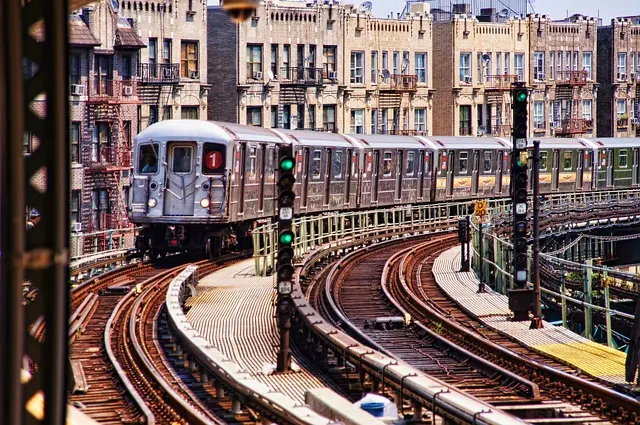
Other Highlights
After completing the Circle Line, switch to Line 2 and visit Mayakovskaya, or explore Line 3’s Revolution Square and Elektrozavodskaya stations.
Mayakovskaya (Маяковская)
⭐ Recommendation: 5 Stars
Built in 1938, Mayakovskaya is often considered the most beautiful station in Moscow. A prime example of Stalinist Neoclassicism, the station features marble floors and elliptical ceiling recesses with lighting fixtures. Embedded within the ceiling are mosaics by famed artist Alexander Deineka, which won a gold medal at the 1938 New York International Exposition. Bonus: It’s usually less crowded, making it perfect for photos!
Revolution Square (Площадь Революции)
⭐ Recommendation: 4 Stars
Completed in 1938, this station beneath Red Square is famous for its bronze sculptures. Each archway features two sculptures, representing Soviet soldiers, farmers, athletes, and students. The dog sculptures are particularly popular; rubbing the dog’s nose is said to bring good luck, leaving its nose polished to a shine.
Elektrozavodskaya (Электрозаводская)
⭐ Recommendation: 4 Stars
Also known as the “Light Bulb Station,” Elektrozavodskaya was completed in 1944. Its ceiling is lined with hundreds of evenly spaced light fixtures, creating a stunning and dramatic effect.
Exploring the Red Line (Line 1)
Though less ornate, Line 1 has its own charm, with highlights including Park Kultury and Kropotkinskaya stations.
Park Kultury (Парк Культуры)
⭐ Recommendation: 3 Stars
Opened in 1935, Park Kultury is near Gorky Park, a favorite recreational spot for locals. The station features marble reliefs by Isaac Rabinovich, depicting scenes of Russians enjoying leisure activities such as dancing, sports, and aviation.
Kropotkinskaya (Кропоткинская)
⭐ Recommendation: 3 Stars
This station is simple yet elegant, featuring “tree canopy” light posts with marble bases. Its minimalist design makes it a refreshing change from Moscow’s more lavish stations.
A day spent exploring Moscow’s metro stations is like walking through a museum of Soviet art and history. Each station tells a story, making the underground journey as fascinating as the city itself.
